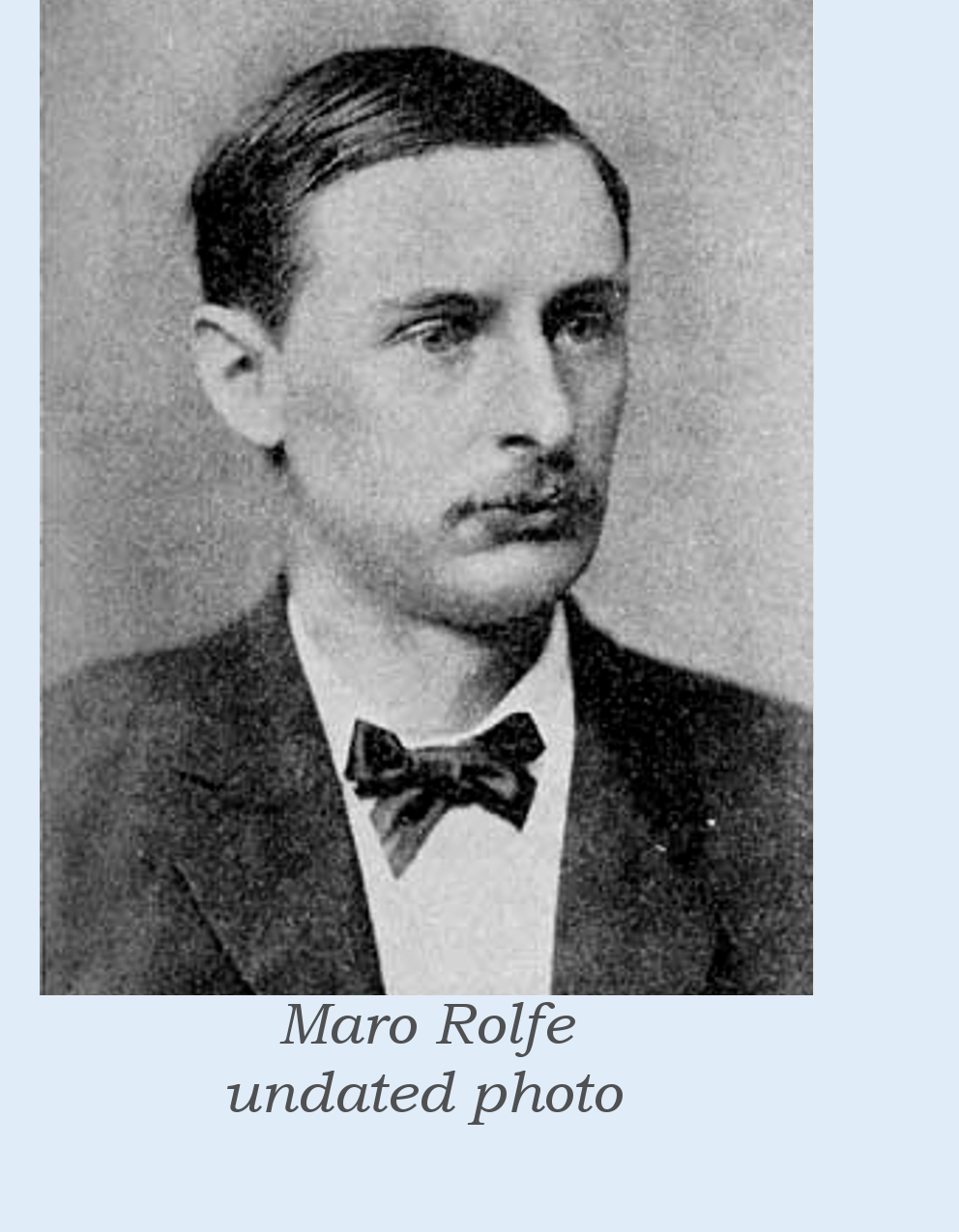
Maro Orlando Rolfe
 Biography
BiographyMaro Orlando Rolfe (January 28, 1852–April 15, 1925), journalist, novelist, historian, and writer of detective stories, also used the following pseudonyms: Oram Eflor (his first and last names spelled backward), Colonel Oram Eflor, A Civil War Captain, Col. Oram R. McHenry, The Novelist Detective M. O. Rolfee, The Old Detective, M. O’Rolfe the Irish Novelist, Mrs. Anna O. Robie, M. O. Rolfee, Sergeant Rolfe, The Young Detective, and possibly A. W. Rolker.
Rolfe was born in Monterey, New York, the son of Furman Rolfee and his wife, Angelina Amelia Reed. When about two years of age, his parents removed to Lawrenceville, Pennsylvania, and here the future writer received his grammar and high school education. He began writing at the age of fifteen and in 1867 published a small amateur newspaper. He wrote short sketches, poetry, and tales for Beadle and Adams’ Saturday Journal in the early 1870s, and in 1872 and 1873 had four tales in Frank Starr’s American Novels. On the 6th of January, 1875, he was married in Lawrenceville to Alice Estelle Potter, daughter of John and Chloe Potter, early settlers of Potter County, Pennsylvania, and by her he had two sons: John F. Rolfee (1880-1937), a newspaperman of Elmira, New York, and later publisher of the Hartford (Conn.) Times; and Albert W. Rolfe (born 1884).
For a number of years after his marriage Rolfe continued to reside in Lawrenceville and during this period contributed to the New York Weekly, Toledo Blade, Yankee Blade, Cincinnati Enquirer, Albany Telegram, Hartford Courant, Pomeroy’s Democrat, and other papers, and at the same time wrote thrillers for the Nickel Library, War Library, Old Cap Collier Library, and Golden Library. Not all of his work, however, was of this character, for about this time he began the publication of the county histories for which he afterwards became well known.
In 1885 he left Lawrenceville and went to Kansas City, Missouri, and was one of the original members of the Western Authors’ and Artists’ Club, founded in 1888 by C. M. Harger and Arthur Grissom. He was now contributing many stories of adventure to the eastern publications as well as to Hearth and Home and the Chicago Blade but soon began to devote himself more to serious writing and in 1888 published a “History of Kansas City.” Two years later the Journalist (Vol. XI, June 14, 1890, 10) said of him: “The wonderfully brilliant genius of this section is writing a history of Wyandotte County, Kansas. As a historian he has no peer in the west.”
From Kansas City he went to Chicago in 1890, was with the Inter Ocean for a time, and later wrote serials for the Chicago Blade and other papers. Always of a roving disposition and not satisfied to stay in one place, he did much freelance work at various places and eventually ended up in California where he was connected with the San Francisco Herald and the Los Angeles Times. In September, 1900, he was seriously injured during the famous Galveston tornado; after a long illness he returned to Los Angeles and lived many years at San Gabriele. Originally a Methodist, he later became an enthusiastic Christian Scientist. He died at Monterey Park, Los Angeles, California, after a lingering illness of Bright’s disease and diabetes.
Bibliography
Mori, the Man-Hunter; or, The Counterfeiters of the Border (Starr’s American Novels, March 18, 1873)
The Army Detective; or, Following a War Mystery (The War Library, August 27, 1886)
Other links
The Dime Novel Companion
Northern Illinois University Libraries